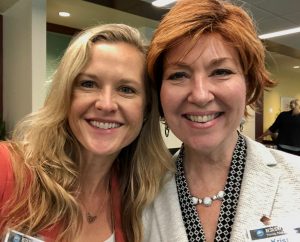Last week, the Florida Department of Environmental Protection demonstrated its leadership by convening more than 100 climate scientists, managers, elected officials, and educators at the Resilient Florida workshop. Held at the Patel Center for Global Sustainability at the University of South Florida, the two-day conference included presentations about ways to model and measure vulnerability, improve highway drainage projects, and incorporate resilience into Gulf restoration efforts. The bottom line: while the cost of inaction is higher, we still lack the political will, region-specific tools, and financial investments to properly mitigate future risk.

FDEP brought the big dogs, inviting high-ranking staff from numerous departments, including Chief Science Officer, Dr. Thomas Frazer, who led a discussion about applied resilience research at our esteemed Florida universities. The conference kicked off with a keynote by FDEP Secretary Noah Valenstein and the newly-appointed Chief Resilience Officer, Dr. Julia Nesheiwat. In her remarks, she committed to engaging all of the communities and professionals involved in resilience efforts and acknowledged the urgency of our mission. That is a far cry from the head-in-the-sand approach that Governor Rick Scott employed. Yet, even if the words “climate change” were outlawed, research and planning were occurring.
In 2011, I was part of the steering committee that hosted the first “Resilient Tampa Bay” workshop. While we limited our words to “storm surge,” “flooding,” and “sea-level rise,” we all knew the underlying cause – climate change. Eight years later, it was a bit like déjà vu to be in that same auditorium talking about threats we’ve known about for decades. A more open and forward-looking dialogue will, hopefully, result in more aggressive and impactful implementation.
I was pleased to see numerous sessions on designing with nature, the value of land acquisition as resilience, and the importance of healthy coral reefs as our first lines of defense against sea-level rise. We know that coral reefs and wetlands are extraordinarily effective at reducing wave energy. They help protect our built infrastructure, such as roads and buildings, from storms and sea-level rise. As communities like Miami struggle with sunny day flooding and have invested millions in pumps, levees, and higher seawalls, it’s critical to remember that the “gray” infrastructure is only part of the solution.
During the facilitated session on research and planning gaps, I offered that government-funded resilience projects should include natural solutions – like living shorelines – and hard infrastructure, like seawalls. We cannot fund only engineered solutions; we must also invest in our natural areas to do the work that we often can’t. I also requested that the Florida Resilient Coastlines Program provide assistance to local communities in developing resilience plans and draft ordinances or policies that could be adopted by state or local governments. With no significant climate change legislation passed in 2019, this year we must demand that our Legislature moves from talk to action by passing legislation that will empower local communities, lessen our reliance on dirty fossil fuels and help fund the myriad projects needed to keep our coasts and communities safe.

